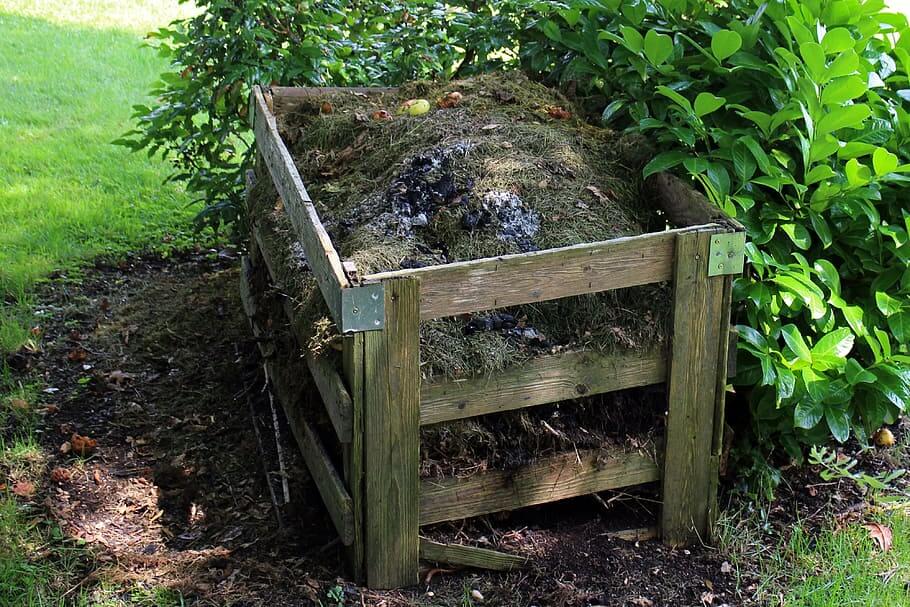
How To Set Up A Home Composting System
By Evert Heijns | July 3, 2023
Composting is a natural process that turns organic waste into nutrient-rich soil. It provides numerous benefits, including reducing landfill waste, improving soil health, and decreasing the need for synthetic fertilizers.
Setting up a home composting system is an easy way to reduce your ecological footprint while creating a sustainable source of fertilizer for your garden.
Choosing the right method and location for your composting system is essential to its success. There are various types of composting methods available, each with its own advantages and disadvantages.
Factors such as space availability, weather conditions, and personal preferences should be considered when selecting the perfect composting method for your needs.
Besides that, finding the ideal location for your compost pile or bin can make all the difference in ensuring proper decomposition and minimizing unpleasant odors.
In this article, we will guide you through the steps necessary to set up a successful home composting system that will provide you with nutrient-rich soil for years to come.
Key Takeaways
- Select the right composting method based on factors like equipment type, compostable materials, time commitment, and optimal location.
- Use suitable compostable materials like fruit and vegetable scraps, coffee grounds, eggshells, grass clippings, and yard waste, while avoiding meat scraps, bones, dairy products, oils, fats, and pet waste.
- Aim for a 1:2 nitrogen-rich materials to carbon-rich materials ratio and regularly turn and aerate the compost mix to control odor and pest infestations.
- Harvest compost using tools like a pitchfork or shovel, gardening gloves, and a container, and expect finished compost in 2-6 months for most home composting systems.
SUBSCRIBE TO OUR NEWSLETTER:
- Key Takeaways
- Understanding the Benefits of Home Composting
- Choosing the Right Composting Method for You
- Selecting the Perfect Location for Your Composting System
- What to Compost (and What to Avoid)
- Creating the Perfect Compost Mix
- Maintaining Your Composting System
- Harvesting Your Compost
- Troubleshooting Common Composting Issues
- Frequently Asked Questions
- Conclusion
Understanding the Benefits of Home Composting
The benefits of home composting include reducing waste, improving soil quality, and decreasing the need for chemical fertilizers. Composting is a natural process that involves breaking down organic matter such as food scraps, yard waste, and other biodegradable materials into nutrient-rich soil-like material.
This composted material can be used to nourish plants in gardens and landscapes. One of the main advantages of home composting is its positive impact on the environment by reducing landfill waste. Organic materials make up a significant portion of landfills and contribute to greenhouse gas emissions.
By composting at home, individuals can divert these materials from landfills and create a valuable resource for their gardens or outdoor spaces. Using homemade compost instead of chemical fertilizers reduces the need for harmful chemicals that may have negative impacts on both human health and the environment.
Moreover, home composting improves soil quality by adding essential nutrients that promote plant growth and improve soil structure. Compost also increases water retention in soils which helps reduce erosion and runoff while keeping plants hydrated during dry spells.
The end result is often healthier plants with stronger root systems that are better able to resist pests and diseases. In order to reap these benefits, it’s important to choose the right composting method for you based on factors such as available space, desired output volume, climate conditions, etc., which will be discussed further in the following section.
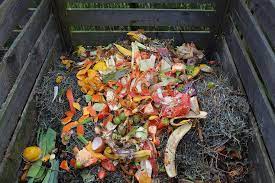

Choosing the Right Composting Method for You
One may consider various composting techniques that best suit their specific needs and preferences. Choosing the right composting method is crucial in ensuring that your home composting system works effectively and efficiently. Here are four factors to consider when selecting a composting method:
- Type of Composting Equipment: There are various types of equipment available for home composting, including tumblers, bins, and piles. Tumblers are perfect for those who want to produce quick results without much effort or space requirements. Bins are ideal for those who have limited outdoor space but still want to produce high-quality soil amendments. Piles, on the other hand, require more space and effort but can produce large quantities of organic matter.
- Compostable Materials: Different types of materials can be used in home composting systems, ranging from kitchen scraps, yard waste, paper products, and even animal manure. It’s essential to choose a technique that can accommodate the type of waste you regularly generate.
- Troubleshooting Techniques: Home composting systems may encounter problems such as unpleasant odor or slow decomposition rates due to improper moisture levels or lack of oxygen flow within the pile/bin/tumbler/pit/vermicomposter (worm bin). Select a suitable technique with troubleshooting tips readily available online or in instructional manuals.
- Time Commitment: The time required for managing your home compost depends on the size of your system and how often you add new material to it. Choose a method that aligns with your schedule and commitment level.
Choosing an effective home composting system is only one step towards reducing food waste while enriching soil health; selecting the perfect location for your system is equally important!
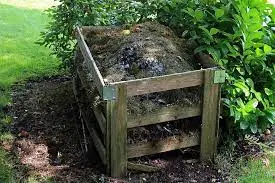
Selecting the Perfect Location for Your Composting System
Selecting the optimal location for a composting system is critical to ensure its efficiency and effectiveness in reducing food waste and improving soil health. First, evaluate the soil in your chosen area. A good compost pile requires adequate drainage and proper airflow, so it is important to select an area with well-draining soil that will not become waterlogged during rainy periods.
It is also important to avoid areas where there may be contaminants such as heavy metals or pesticides present in the soil, which can negatively impact the quality of your compost. In addition to evaluating the soil, choosing the right type of composting bin can also impact where you choose to place your system.
If you are using a traditional open-air pile or windrow method, then a flat, level area with plenty of access space around it would be ideal. However, if you opt for a closed container or tumbler system, then you may need to consider factors such as proximity to power sources for turning mechanisms or ventilation systems.
Overall, when selecting the perfect location for your home composting system, it is important to take into account both environmental factors (such as soil quality and drainage) and practical considerations (such as available space and type of bin).
By carefully considering these factors and choosing a suitable location for your compost pile or bin, you can maximize its effectiveness in converting food waste into nutrient-rich fertilizer without negatively impacting surrounding plants or wildlife.
Now that we have discussed how to choose the perfect location for your home composting system let’s move on to exploring what materials are suitable for composting (and what should be avoided).

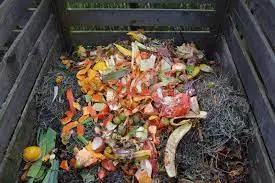
What to Compost (and What to Avoid)
Identifying suitable organic matter for composting is like sifting through a treasure trove of nutrients waiting to be unlocked. Composting materials come in all shapes and sizes, but not everything belongs in your compost pile. To ensure that your composting system functions optimally, it’s important to know what to add and what to avoid.
To start with, suitable materials for composting can include fruit and vegetable scraps, coffee grounds, eggshells, grass clippings, yard waste (leaves and small branches), shredded paper or cardboard. These items are rich in nitrogen and carbon which provide the necessary balance for healthy decomposition.
On the other hand, avoid adding meat scraps or bones as they attract rodents and other pests. Also avoid adding dairy products as they tend to slow down the composting process. When it comes to creating an optimal mix for your compost pile or bin, aim for a ratio of 1:2 (nitrogen-rich materials: carbon-rich materials).
This can be achieved by layering greens (nitrogen) such as food scraps and grass clippings with browns (carbon) such as dried leaves or shredded newspaper. It’s important to keep the mix moist but not too wet – aim for a texture similar to a damp sponge. Turning your pile regularly will also help aerate it and speed up the decomposition process.
Understanding what materials are suitable for composting is crucial if you want an efficient home composting system. While there are many things that can be added to your pile or bin – including kitchen scraps, yard waste and paper products – it’s important to avoid anything that could slow down the process or attract unwanted pests. With this knowledge in mind we can now move on to creating the perfect compost mix without skipping a beat!
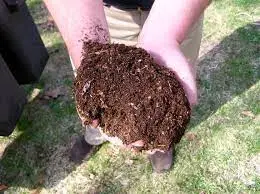
Creating the Perfect Compost Mix
Achieving the ideal balance of nitrogen-rich and carbon-rich materials is crucial for creating a perfect compost mix that facilitates efficient decomposition. The ratio of these two types of materials should ideally be 30:1, with carbon being the dominant component. Nitrogen-rich materials include food scraps, grass clippings, and manure while carbon-rich materials include wood chips, leaves, and straw.
It’s important to note that certain types of materials should be avoided when creating a compost mix. These include meat, dairy products, oils, fats, and bones as they can attract pests and slow down the decomposition process. Pet waste should also not be composted as it contains harmful pathogens that can contaminate your soil.
When setting up your home composting system, there are various container options available such as a bin or tumbler. Make sure to choose a container that is appropriate in size for the amount of material you will be composting. It’s also important to regularly turn and aerate your compost mix to ensure proper decomposition.
With the right combination of nitrogen-rich and carbon-rich materials in an appropriate container option and avoiding certain materials such as meat or pet waste from being added into your mix will guarantee optimal results for your home gardening needs.
Maintaining an efficient home composting system requires regular attention to keep it functioning at its full potential without emitting too strong odors or attracting unwanted pests.
Maintaining Your Composting System
To maintain a successful composting system, consistent attention is necessary to prevent unpleasant odors and pest infestations. One of the most important aspects of maintenance is choosing the right composting containers. Consider factors such as size, drainage, and ventilation when selecting your container. It’s also essential to avoid overfilling or underfilling your container as both can lead to issues with odor and pests.
Odor control is another critical element in maintaining your composting system. To reduce unpleasant smells, keep a good balance of greens and browns in your compost mix and avoid adding meat or dairy products. Turning your compost regularly will also aid in reducing odors by allowing oxygen to circulate throughout the mixture.
If you find that there is an overpowering smell coming from your compost, you may need to adjust the nitrogen-to-carbon ratio by adding more browns or aerating it further. As you continue to maintain your composting system, be sure to monitor for any signs of pest infestations such as flies or ants. If you do notice pests, try covering your pile with a layer of soil or leaves as this can deter them from nesting within the mixture.
Furthermore, keeping the area around your compost clean and free of debris will discourage pests from making their way into your setup. To transition into harvesting your compost: Once you’ve successfully maintained your system for several weeks or months depending on its size and composition, it’s time to start thinking about harvesting it!
Harvesting Your Compost
Harvesting your compost is a satisfying and rewarding process that allows you to transform organic waste into nutrient-rich soil for your garden or plants. Before harvesting, it’s important to ensure that the compost has fully decomposed. This can be determined by checking the texture and smell of the compost – it should be dark, crumbly, and have an earthy scent.
Also, if you see any recognizable food scraps or other materials in the compost, it may still need more time to decompose. To harvest your compost, you’ll need some basic composting tools such as a pitchfork or shovel, gardening gloves, and a container for collecting the finished product. Begin by removing any uncomposted materials from the top layer of your bin or pile using your tool of choice.
Then, use your tool to scoop out the finished compost from the bottom of the pile or bin. Be sure to collect all of the finished compost before starting another batch. The timeline for harvesting your compost will vary depending on factors such as temperature and moisture levels in your area. As a general rule of thumb, most home composting systems take between 2-6 months to produce finished compost.
However, this timeline can be shortened by regularly turning and aerating your pile or using a tumbling composter. If you encounter any issues during the harvesting process such as unpleasant odors or pests in your bin/pile, don’t worry! Troubleshooting common composting issues is covered in detail in our next section.
In troubleshooting common composting issues, we’ll explore ways to address problems that may arise during various stages of home composting including odor control techniques and pest management strategies among others.
Troubleshooting Common Composting Issues
Addressing issues that may arise during the composting process is essential for ensuring a successful and effective transformation of organic waste into nutrient-rich soil. One of the most common problems that people encounter when composting at home is unpleasant odors. These smells are often caused by an imbalance in the compost, typically due to too much moisture or insufficient oxygen.
To control odor, it is important to maintain a proper balance of green (nitrogen-rich) and brown (carbon-rich) materials, as well as regularly turning or aerating the pile. Another issue that can arise during home composting is pest infestation. Flies, rodents, and other pests are attracted to food scraps and other organic matter in the pile.
To prevent these unwanted visitors from taking up residence in your compost heap, make sure to bury any fresh food scraps beneath layers of dry leaves or other carbon sources. You can also try adding diatomaceous earth or crushed eggshells to discourage pests like ants and slugs.
It’s worth noting that some minor problems with your compost pile are normal and nothing to worry about. For example, you may notice mold growing on certain parts of the pile – this is generally harmless and will break down alongside everything else over time.
Similarly, small insects like springtails are often found in healthy compost piles and help with decomposition. By understanding how to troubleshoot common issues like odor control and pest prevention while remaining patient with minor hiccups along the way, you’ll be well on your way to successfully creating rich garden soil from your household waste.
Frequently Asked Questions
Can I compost meat and dairy products?
Composting meat and dairy products is possible but requires careful management to avoid attracting pests, producing unpleasant odors, or spreading pathogens. It’s recommended to use a hot composting method and balance the ratio of carbon to nitrogen.
How often should I turn my compost pile?
Aerating compost piles through turning helps maintain oxygen levels, which promotes decomposition. Turning every 2-3 weeks balances moisture, temperature and allows for quicker breakdown of materials. Composting without turning can take longer but it requires less maintenance.
What is the best way to prevent odors from my compost bin?
To prevent odors from your compost bin, consider using a composting bin with a lid and proper ventilation. Troubleshoot common composting problems by avoiding adding meat or dairy products, keeping the ratio of carbon to nitrogen balanced, and regularly turning the compost.
Can I use compost as a soil amendment for indoor plants?
Compost can be used as an effective soil amendment for indoor plants, including hydroponic plants. Worm composting is a viable option for small apartments and produces nutrient-rich material that can improve plant growth and health.
How can I tell if my compost is ready to use in my garden?
One method to test compost maturity is the “seed germination”test, which involves planting seeds in the compost. Compost tea can be used as a fertilizer in the garden. Both methods can improve soil health and plant growth.
Conclusion
Home composting is a great way to reduce waste, save money and improve soil quality. Choosing the right method and location for your composting system is crucial to creating healthy, nutrient-rich soil. Organic materials such as fruit and vegetable scraps, grass clippings and leaves can be used to create a perfect mix of compost that will benefit your garden or lawn.
One interesting statistic that highlights the importance of home composting is that in the United States alone, food waste makes up around 22% of landfill volume. This means that approximately 30 million tons of food waste end up in landfills each year, where it produces methane, a potent greenhouse gas.
By composting at home instead of sending food waste to landfills, individuals can significantly reduce their carbon footprint while improving soil health. To set up a successful home composting system, it’s important to understand which materials are suitable for composting and which ones should be avoided.
Maintaining the proper balance of nitrogen-rich ‘green’ materials like fresh grass clippings and carbon-rich ‘brown’ materials such as dried leaves is key to producing high-quality compost. Regularly turning or aerating the pile will also help speed up decomposition and prevent unpleasant odors from forming.
Overall, home composting is a simple yet effective way for individuals to make a positive impact on both their own gardens and the environment as a whole. With some basic knowledge and effort put into maintaining your system, you’ll soon have nutrient-rich soil that will benefit all kinds of plants – from vegetables to flowers – while reducing landfill volume at the same time.

